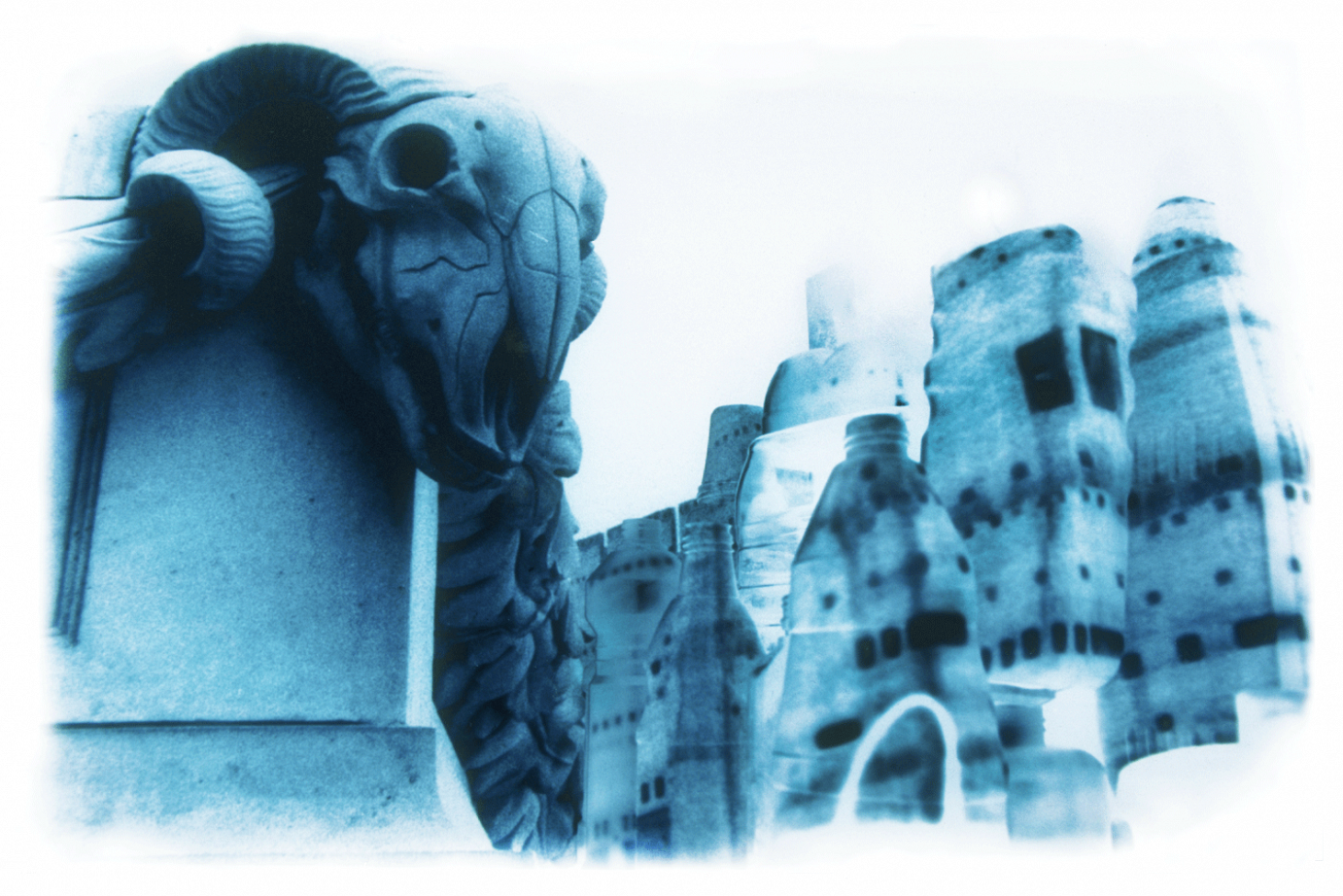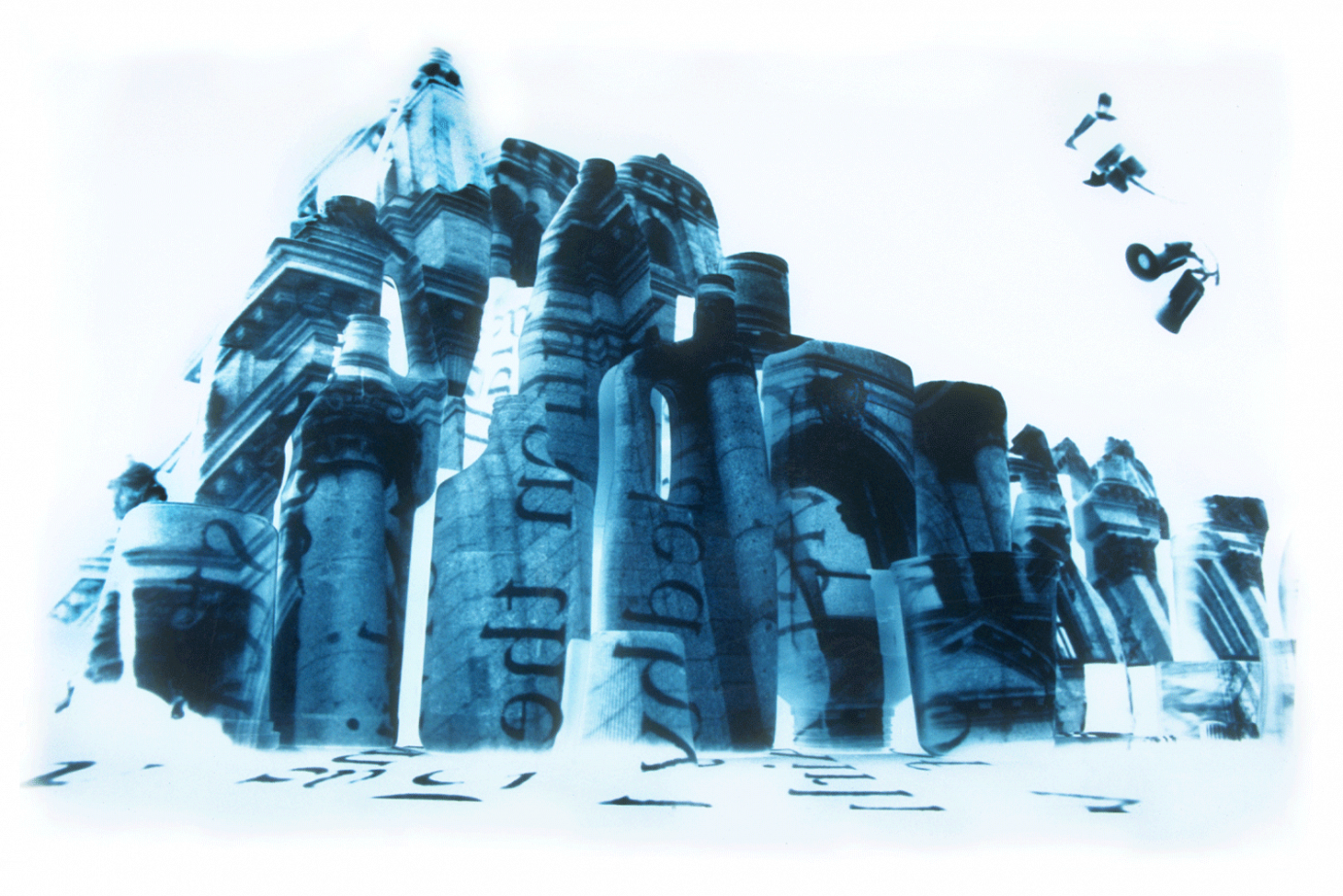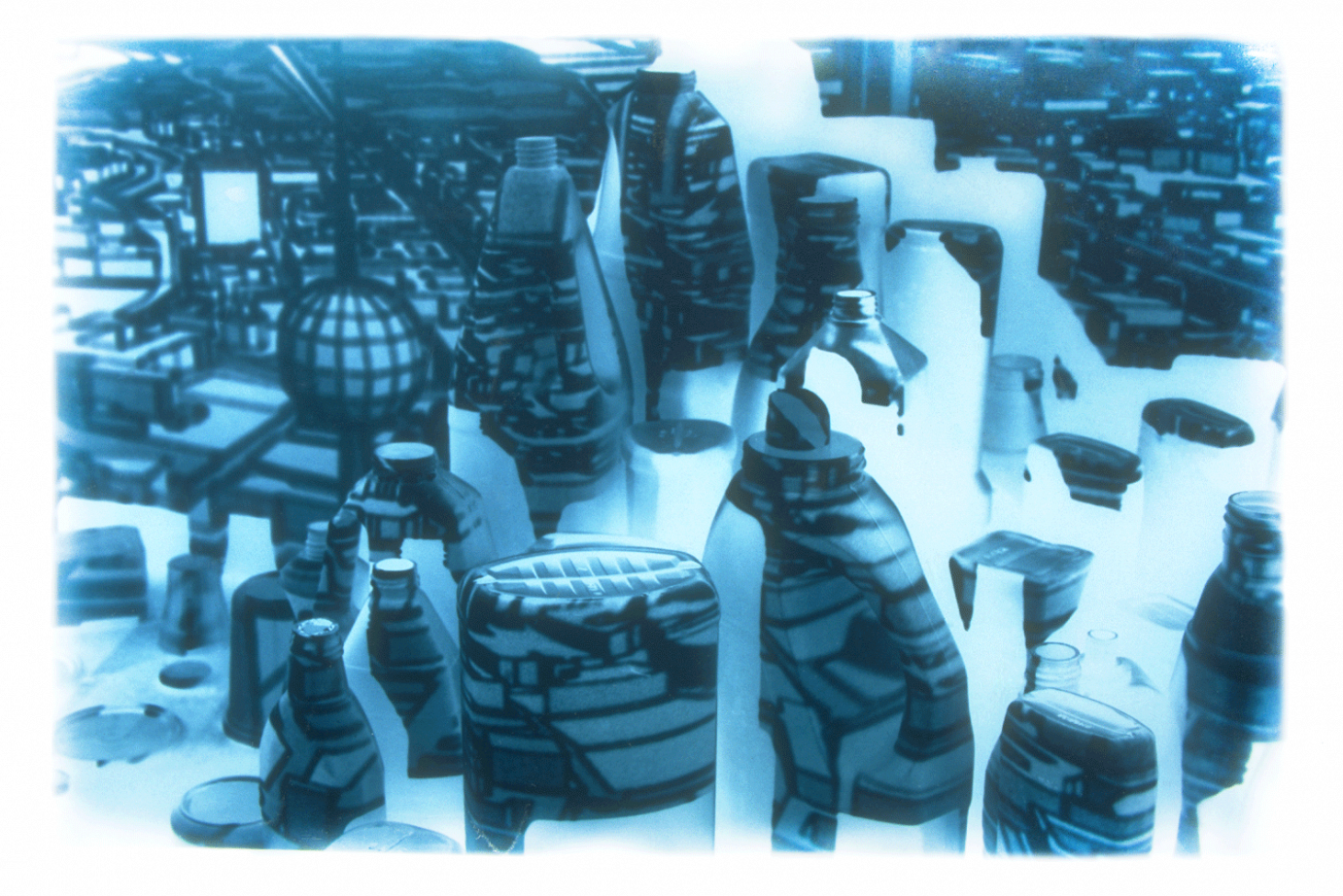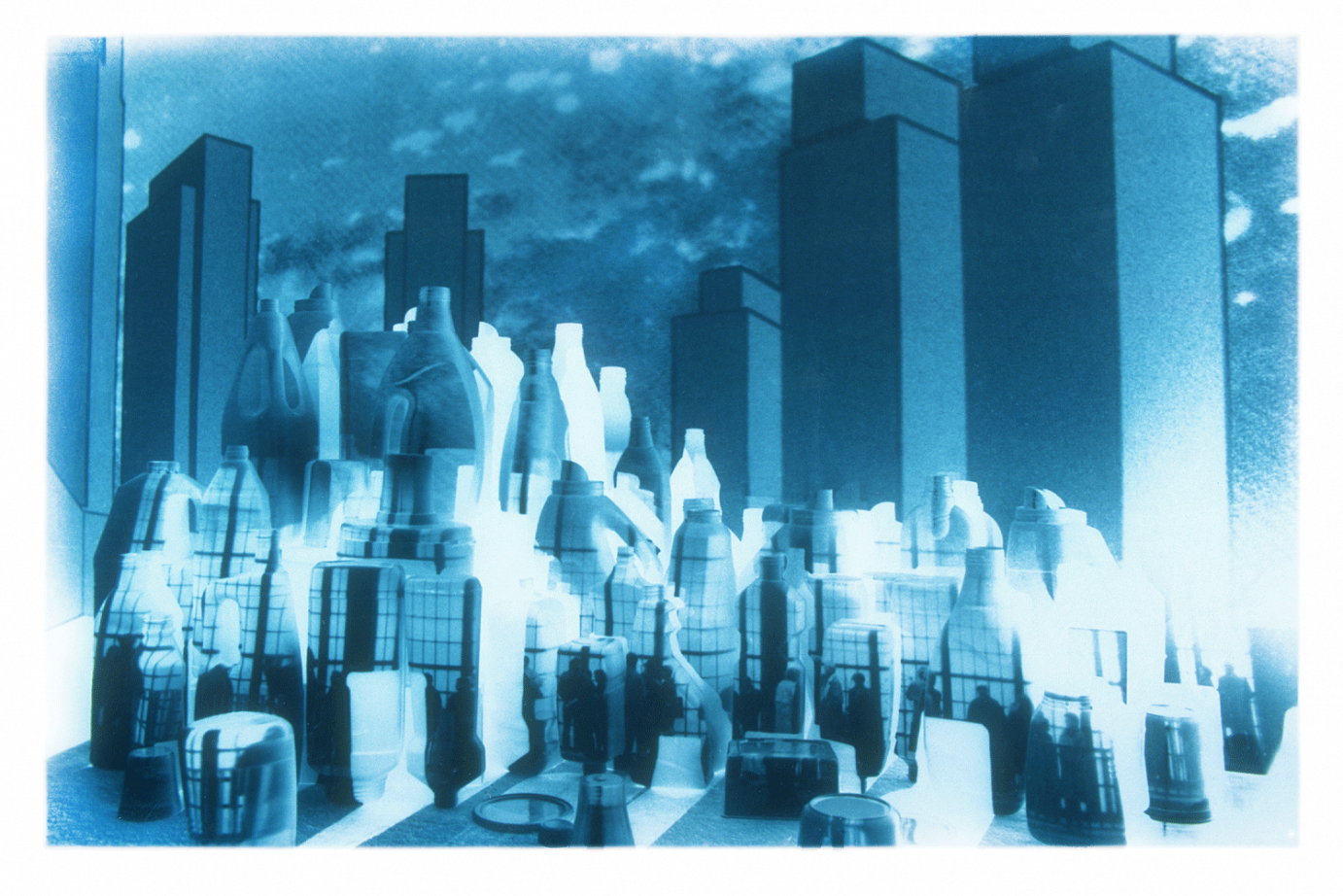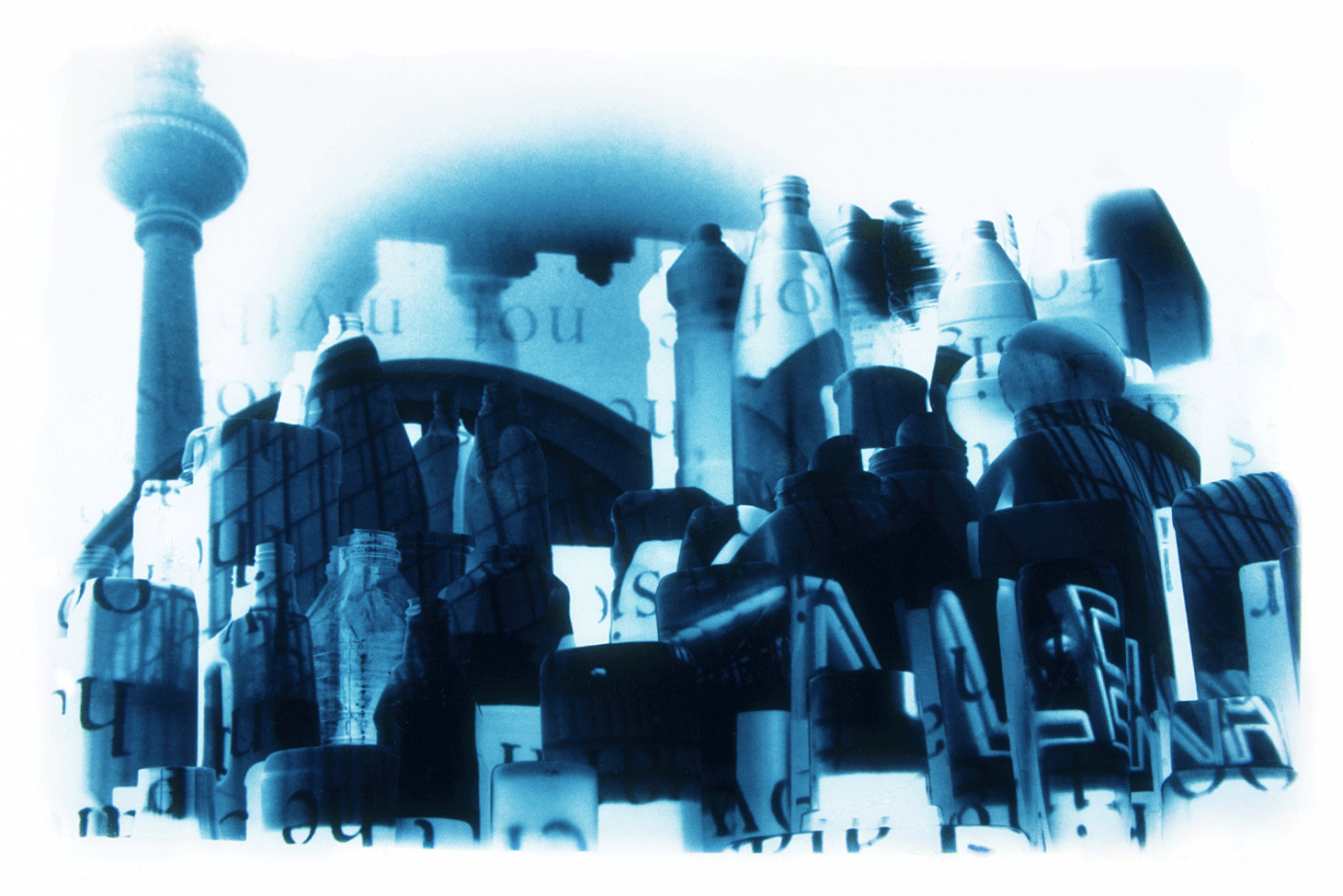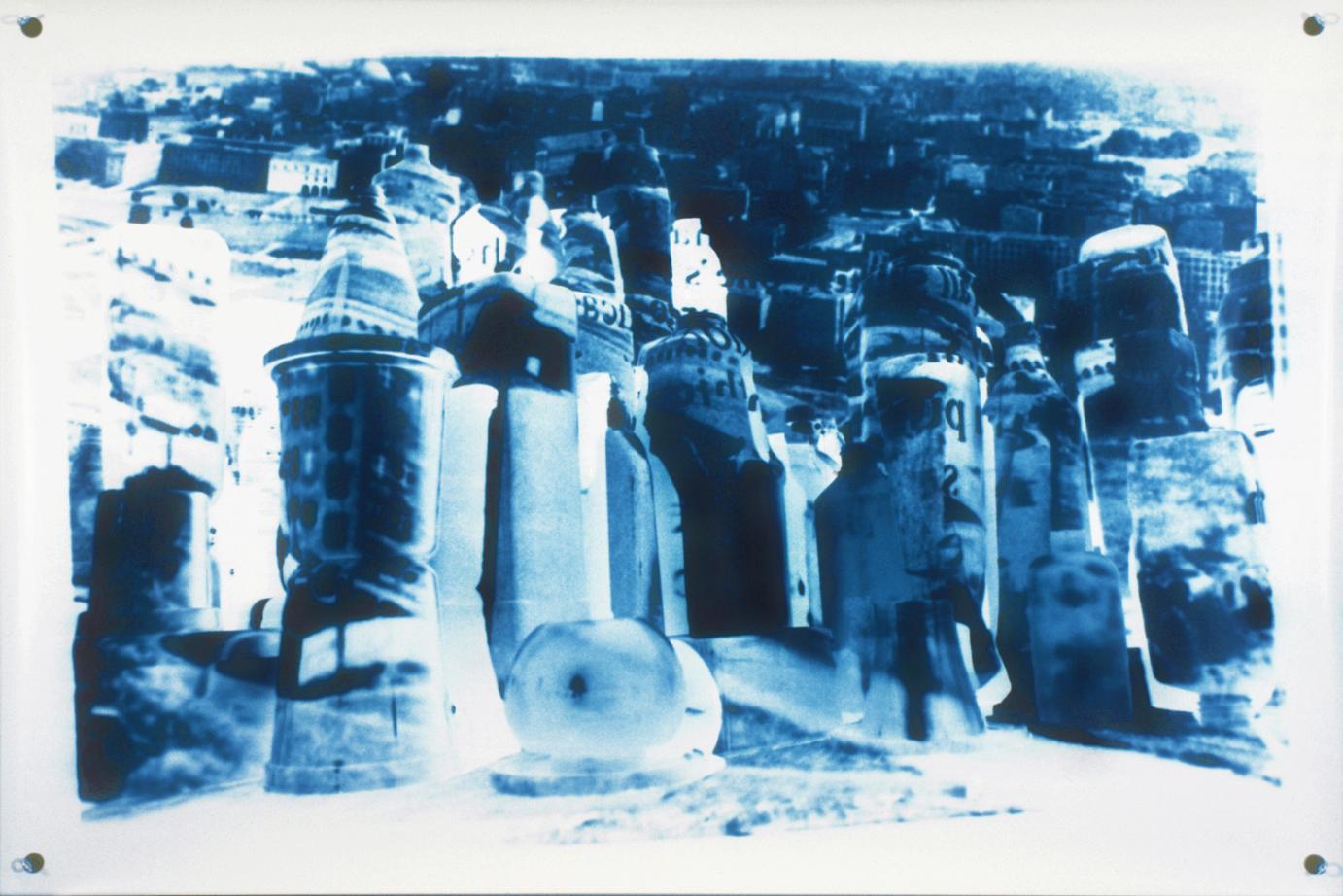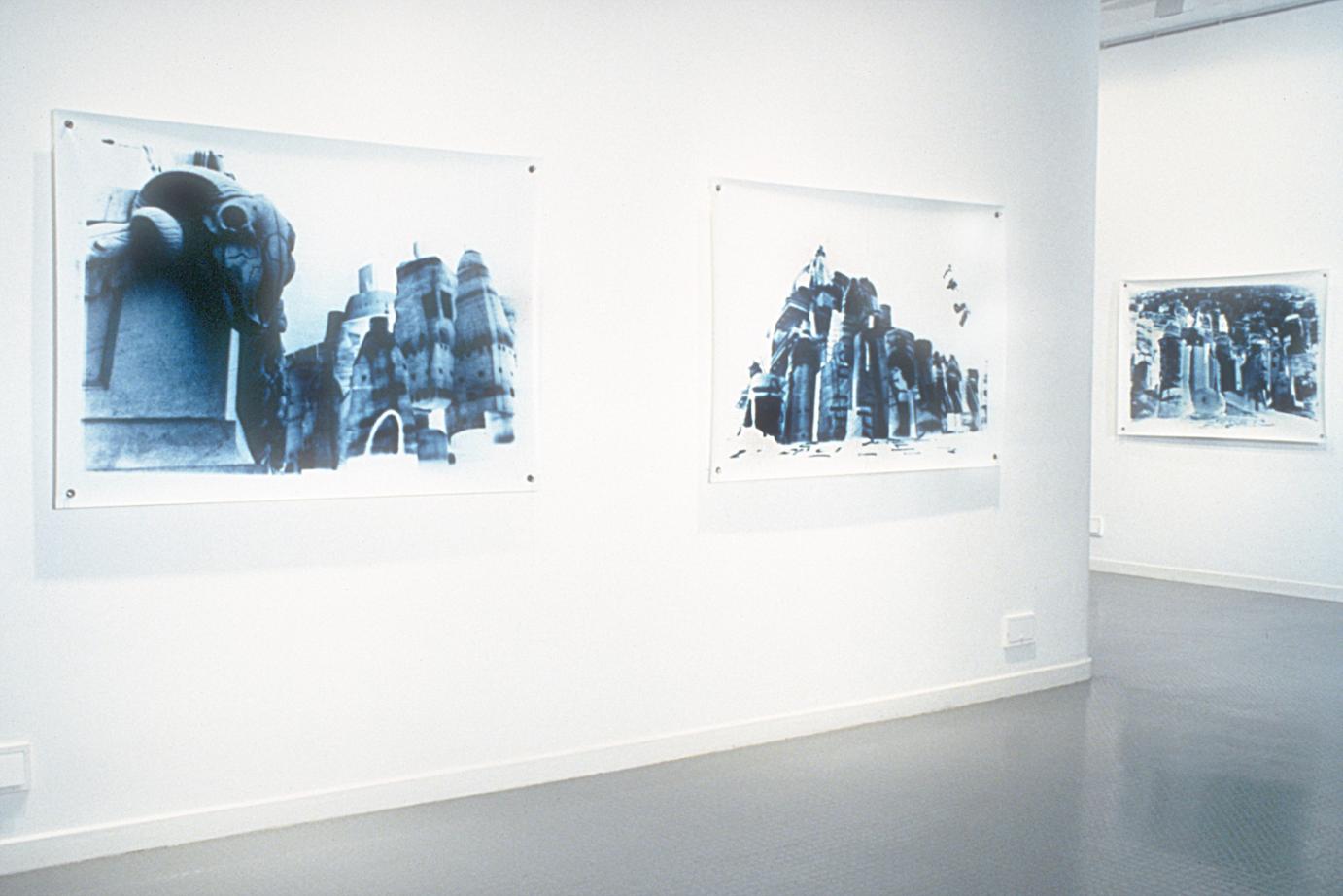In late 1991, in the wake of German re-unification, I returned to Berlin for two
months, photographing the city and collecting material for the exhibition
Zeitmauer [too literally translated 'time-wall'] that opened at the London
Goethe Institut in Spring 1992 and later travelled to Berlin and Gera in the
former German Democratic Republic [DDR].
As a result, and only after much
deliberation and self-critique of the 'documentary' content of my material,
'Visible Cities' emerged as a representation of the city [especially this city]
as an unstable subject. Berlin is by no means a describable place - not one
city, not even two, but many.
about Visible Cities
The 'cities' - face-laminated 1.5 x 1.0 m [60 x 42 in] blue-toned
silver prints - are stretched and floated off the wall with simple hardware.
Their individual names are borrowings from Italo Calvino's Invisible Cities.
Here as in that book, descriptions of external phenomenae
such as cities are deemed to represent more precisely the notion of a
complex interior space - the subjectivity of the reporter.
In the studio, my original negatives and other images of Berlin were
projected onto three-dimensional constructions of consumed
plastic containers and rephotographed on positive film. The resulting
film positives were then printed as negatives, so that the positive
material in them became negative in the print and vice versa.
The familiar space of conventional architectural imagery was thus
warped with unlikely or impossible perspectives, but also by the
apparently absurdist element of the plastic debris.
Laudomia studio projection
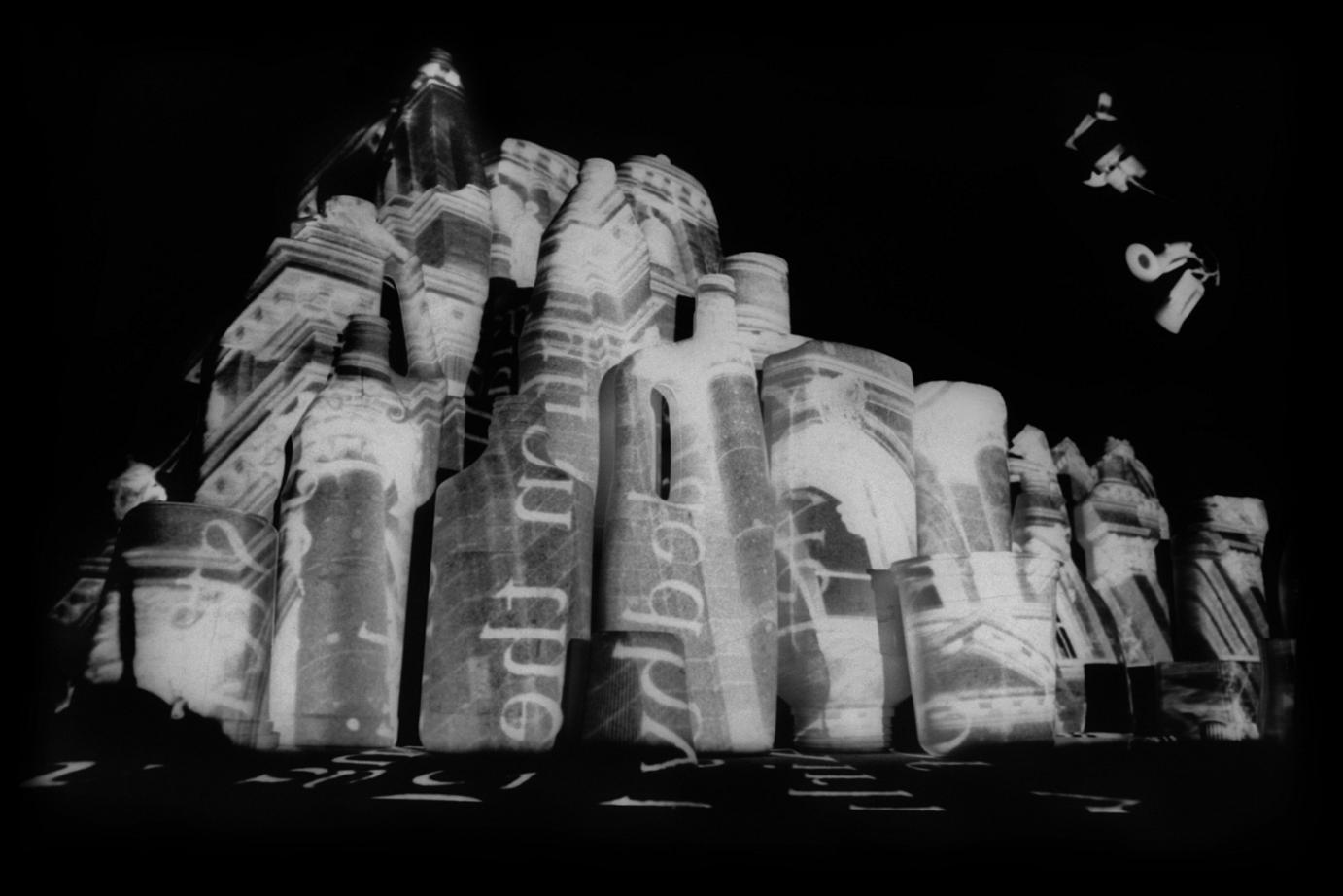
From my point-of-view however, the designed spaces of architecture
and of consumer packaging are not incongruent - both indexing the
way consumption-culture conceives and incorporates space as
commodifiable units. Visitors to the ruins of our time will more
easily recognise this congruency.
In 'Visible Cities' the sublime illusion of historic or futuristic
Utopias appears questionable; Dystopian examples [like cardboard cities]
are more likely.
Graham Budgett, 1993
